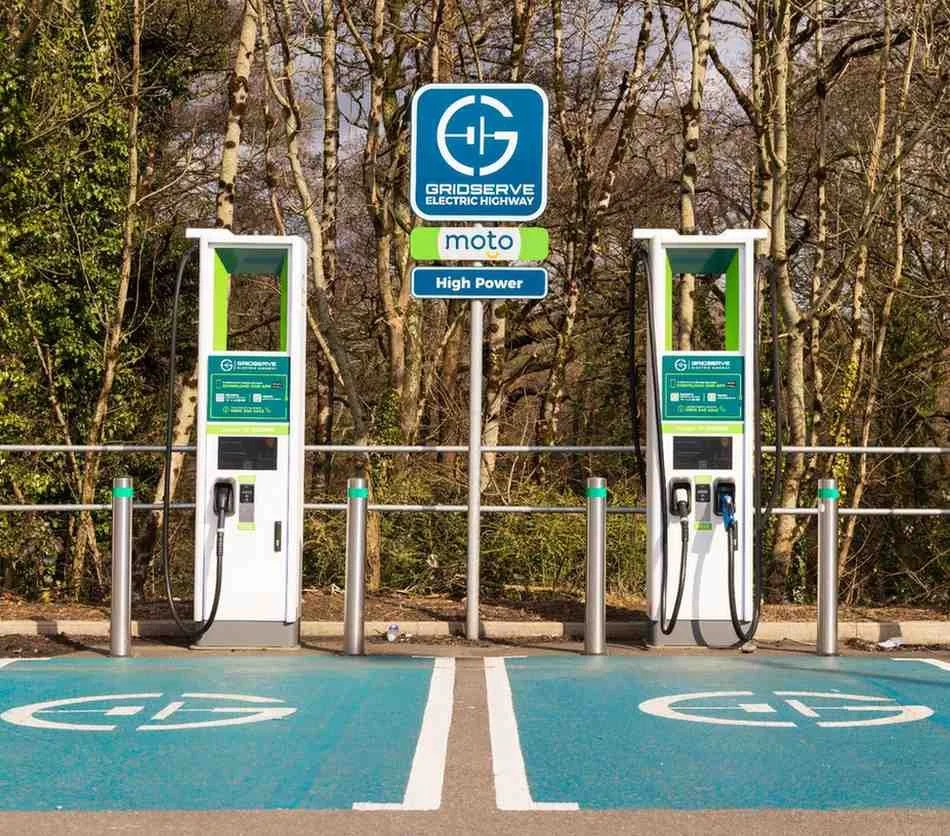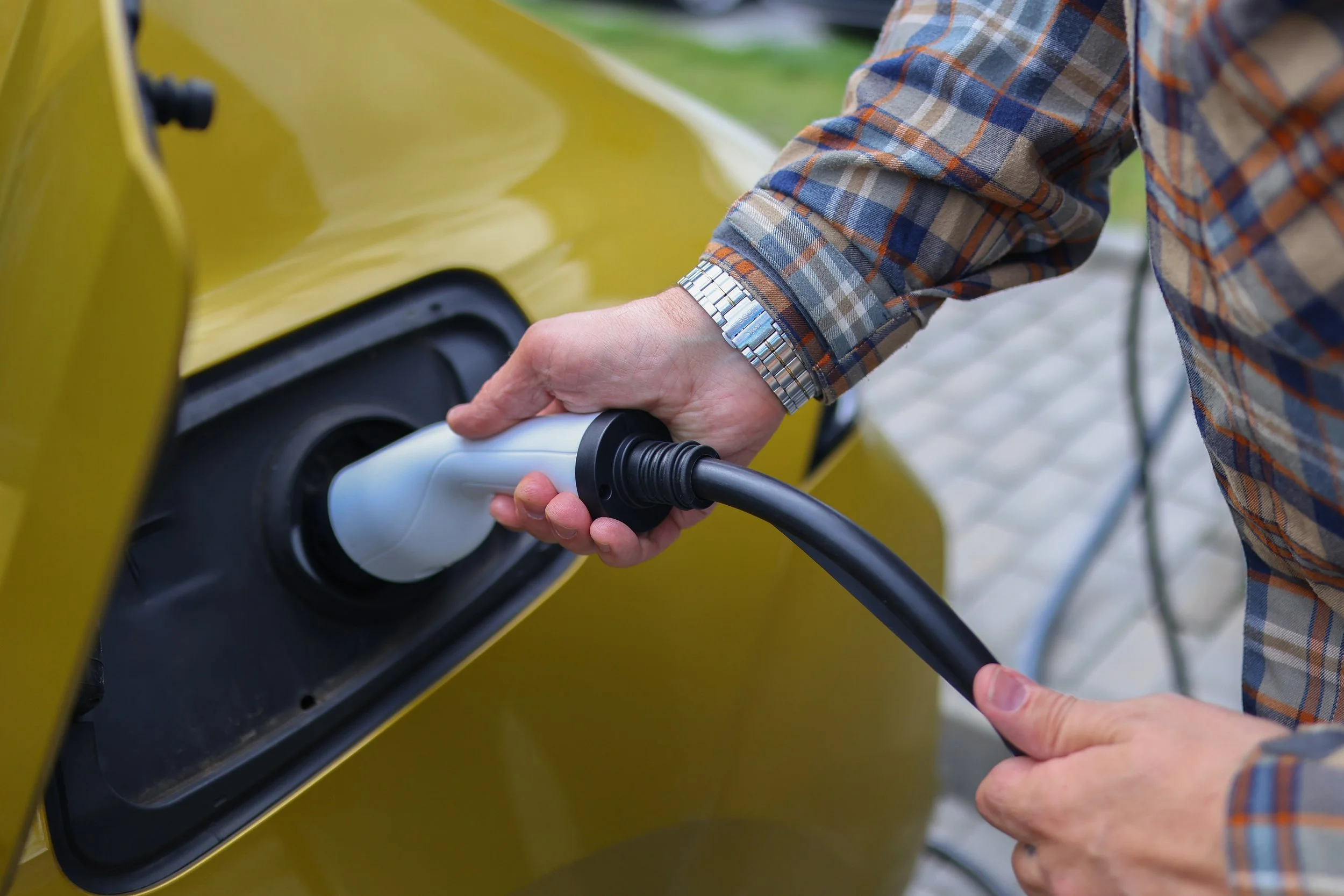EV Charging Etiquette 2026: 10 Essential Rules for Public Charging Points
Image source: Shutterstock
Public charging works best when everyone plays their part. If you’ve ever arrived at a charger with a low battery only to find every bay blocked, you’ll know how frustrating poor charging etiquette can be.
As more drivers switch to electric in 2026, the shared charging infrastructure is exactly that… shared. A few simple habits can make charging quicker, cheaper, and far less stressful for everyone.
This guide walks you through the essential rules of public EV charging etiquette, why they matter, and how you can save money while charging.
Why Does EV Charging Etiquette Matter in 2026?
The UK’s public charging network has grown rapidly, with more than 86,000 public charge points now available nationwide. That’s a huge step forward, but demand is rising just as quickly.
Peak times (like Friday afternoons), motorway service stations, and city-centre rapid hubs can still become congested. Rapid chargers in particular are a limited resource, designed to get drivers back on the road quickly rather than parked for long periods.
Good charging etiquette:
Reduces queues and waiting times
Helps new EV drivers feel confident
Prevents unnecessary conflict at charge points
Keeps public charging working as intended
Think of public charging like a shared kitchen at work - a little consideration goes a long way.
What Are The 10 Essential Rules of Public EV Charging Etiquette?
Should I Charge My EV to 100% at Public Chargers?
In most cases, no.
Charging from 80% to 100% can take 30–40% longer than charging to 80%, because charging speeds slow as the battery fills. For most journeys, that extra time delivers very little additional usable range.
If you have enough charge to reach your destination or the next charger, it’s more efficient and considerate to move on at around 80–85%.
Image source: Shutterstock
What Is “ICEing” And Why Is It a Problem?
“ICEing” happens when a petrol or diesel vehicle (an internal combustion engine car) parks in an EV charging bay.
This blocks access to the charging infrastructure that EV drivers need. Many councils and private car park operators now enforce EV-only bays.
If you encounter ICEing:
Report it to the site operator
Avoid confronting drivers directly
Can I Park In An EV Bay Without Charging?
No. EV bays are for active charging only, not convenience parking.
Even a short stop can prevent another driver from topping up and may leave someone stranded. If you’re not charging, choose a standard parking space.
Which Chargers Should I Avoid During Peak Times?
During busy periods, try to avoid:
Using rapid chargers when you don’t need them
Occupying ultra-rapid bays for short top-ups
Charging at motorway hubs if you can charge at your destination
Planning helps reduce pressure on shared infrastructure.
How Long Can I Stay Plugged In After Charging Completes?
Only while you’re actively charging.
Once you’ve reached your required charge level, aim to move your car within 5–10 minutes. Many UK networks now apply idle fees once charging ends.
Can I Unplug Someone Else’s EV?
No.
Most EVs and charge points lock the cable during charging. Attempting to unplug another vehicle can damage equipment and may be considered tampering or criminal damage.
If someone is overstaying, report it to the charging network rather than intervening yourself.
Should I Hog Rapid Chargers With Slow-Charging EVs?
If your car can only charge at 3.6kW or 7kW AC, avoid rapid chargers (50kW or above) unless it’s an emergency.
Using a rapid charger without being able to take advantage of DC charging speeds blocks a vital resource that other drivers may urgently need. Slower destination chargers are a better match for your vehicle.
How Can I Reduce My Reliance On Public Charging?
The simplest way to avoid public charging stress is to charge where you park.
That usually means:
Taking advantage of destination chargers while shopping or staying overnight
Public chargers should be the backup, not the default.
Image source: Shutterstock
What Should I Do If Someone Is Breaking Charging Etiquette?
Stay calm and avoid confrontation.
Instead:
Report issues to the site operator or charging network
Use the network’s app or helpline
Use community reporting tools where available
Most problems are resolved faster through official channels.
How Do Idle Fees Work At UK Charging Networks?
Idle fees are designed to keep chargers available for active use.
Typically:
£0.20–£0.40 per minute after charging completes
Some ultra-rapid networks charge up to £1 per minute
Fees can quickly exceed £20 if you overstay
Setting alerts in your charging app helps you move your car on time.
How Can I Save Money On EV Charging?
Public charging is convenient, but it’s also the most expensive way to charge your EV. That’s where The Charge Scheme comes in.
How The Charge Scheme Makes Public Charging Affordable
The Charge Scheme is an extension of The Electric Car Scheme, designed to help drivers reduce the ongoing cost of charging, not just the cost of the car.
If you access your EV through salary sacrifice, you can also salary sacrifice your charging costs.
What is The Charge Scheme?
The Charge Scheme allows eligible drivers to pay for:
Home charging
Workplace charging
Public charging
All through gross salary, reducing income tax and National Insurance. You use a single app or card across major UK charging networks, keeping charging simple wherever you are.
How Much Can I Save With Salary Sacrifice Charging?
Image source: Shutterstock
Savings typically range from 20–50%, depending on your tax bracket.
Example:
£1,200 annual public charging spend
With The Charge Scheme: £600–£960
Annual saving: £240–£600 or more
For home charging:
Standard 60kWh charge: around £16
With The Charge Scheme: £8–£12
With off-peak EV tariffs: £4–£8
Over 10,000 miles a year, this can mean £500–£1,000 in savings.
Why Is Home Charging More Cost-Effective Than Public Charging?
Public rapid charging typically costs 55–85p per kWh. Home charging uses cheaper electricity, avoids idle fees, and fits naturally into your routine.
Combined with salary sacrifice, it’s the most affordable and stress-free way to charge.
Where Should You Charge Your EV For The Best Experience?
Image source: Volvo Newsroom
Home Charging
Home charging is by far the cheapest and easiest option, with no etiquette concerns.
Workplace Charging
Charging your EV at work is often underused, subsidised, and ideal for daytime top-ups.
Destination Charging
Charge while you shop, eat or stay overnight.
En-route Rapid Charging
Best used sparingly, planned, and vacated promptly.
Frequently Asked Questions About EV Charging Etiquette
How Long Should I Stay Plugged In At a Public Charger?
Only while actively charging. Move your car within 5–10 minutes once charging completes to avoid idle fees.
What Are Idle fees, And Who Charges Them?
Idle fees apply when your EV remains plugged in after charging ends. Networks such as Tesla, IONITY and Instavolt typically charge between £0.20 and £1 per minute.
Can I Unplug Someone Else’s EV?
No. Never unplug another driver’s vehicle. Report overstays to the charging network instead.
What Should I Do If EV Bays Are Blocked By Petrol Cars?
Report ICEing to the site operator and use community reporting tools where available.
Should I Use a Rapid Charger If My EV Only Charges at 7kW?
Avoid doing so during peak times unless it’s an emergency.
How Can I Save Money On Public Charging?
Use The Charge Scheme, charge off-peak where possible, and take advantage of destination and workplace chargers.
Is Home Charging Always Cheaper Than Public Charging?
Yes. Home charging is significantly cheaper, especially when combined with salary sacrifice and EV-specific tariffs.
Does EV Tax Change in 2026?
Yes. Benefit-in-Kind for electric cars will rise to 4% from April 2026, making salary sacrifice savings even more important.
The Future Of Charging Etiquette
As the UK approaches 2 million EVs on the road in 2026, good charging etiquette will become increasingly important. Better infrastructure, smarter pricing and affordable home charging through schemes like The Charge Scheme will help ensure public charging works efficiently for everyone.
Charging etiquette isn’t about rigid rules; it’s about making EV ownership work smoothly for all drivers.
Charge what you need, move your car promptly, and rely on home and workplace charging wherever possible. You’ll save money, reduce stress, and help keep the UK’s charging network flowing!
Are you an employer?
BOOK A DEMOAre you an employee?
SEE AVAILABLE CARSLast updated: 19/12/2025
Our pricing is based on data collected from The Electric Car Scheme quote tool. All final pricing is inclusive of VAT. All prices above are based on the following lease terms; 10,000 miles pa, 36 months, and are inclusive of Maintenance and Breakdown Cover. The Electric Car Scheme's terms and conditions apply. All deals are subject to credit approval and availability. All deals are subject to excess mileage and damage charges. Prices are calculated based on the following tax saving assumptions: England & Wales, 40% tax rate. The above prices were calculated using a flat payment profile. The Electric Car Scheme Limited provides services for the administration of your salary sacrifice employee benefits. The Electric Car Scheme Holdings Limited is a member of the BVRLA (10608), is authorised and regulated by the FCA under FRN 968270, is an Appointed Representative of Marshall Management Services Ltd under FRN 667174, and is a credit broker and not a lender or insurance provider.
Copyright and Image Usage: All images used on this website are either licensed for commercial use or used with express permission from the copyright holders, in compliance with UK and EU copyright law. We are committed to respecting intellectual property rights and maintaining full compliance with applicable regulations. If you have any questions or concerns regarding image usage or copyright matters, please contact us at marketing@electriccarscheme.com and we will address them promptly.









